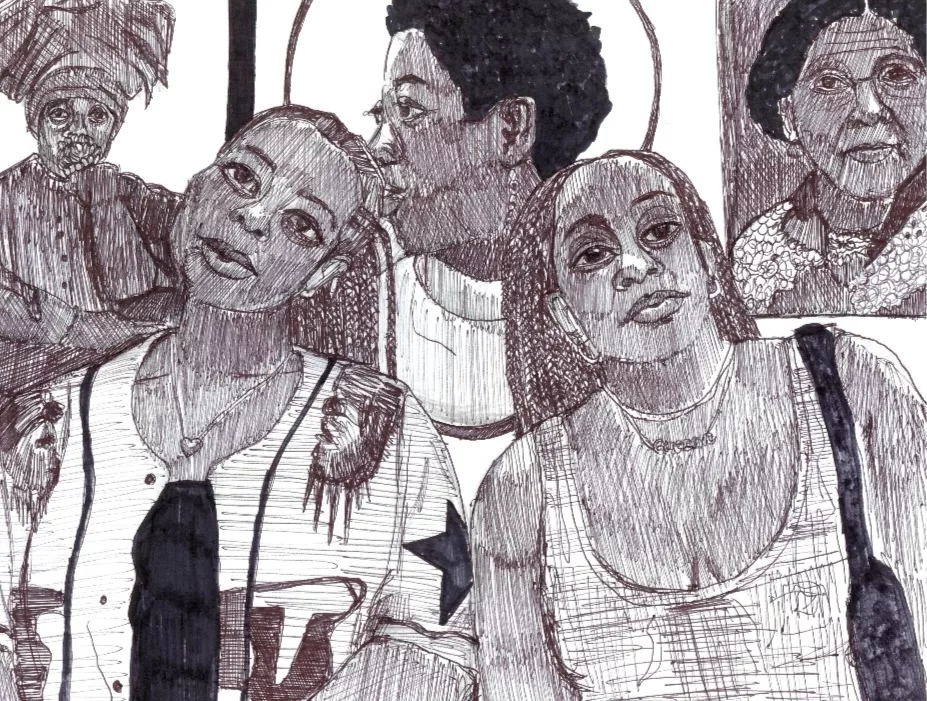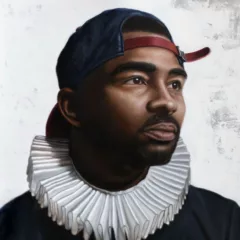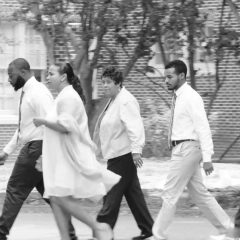
With critical race theory being systematically thrown out of institutions, book bans continuing to rise, and the Department of Education in a vulnerable position post-election, research based in truth and logic becomes an even more valuable initiative. It is crucial for independent scholars, artists, writers, academics, and journalists to rely on the strength that honest analyses provides us. Often, materials can be found in unique circumstances, in other mediums. For example, several streaming shows and films insert historical information that may be unfamiliar, encouraging the mind to expand beyond what has been taught. Furthermore, I did not learn about the momentous contributions of nonwhite people in Europe from history textbooks and art history curriculums.
In Queenie— a recent series based on Candice Carty-Williams’s award-winning novel—I found an unexpected lesson. The eight-episode show centers on the quarter midlife crisis of Londoner Queenie Jenkins (Dionne Brown), a second-generation member of a Jamaican-British family. Her fragile mental state is piled beneath generational family trauma, a miscarriage and a subsequent breakup, and being placed on leave from her writing position at the fictional Daily Read newspaper. Behind the complexities of modern day relationships and the potential dangers of hookup culture, the series raises awareness about the Caribbean diaspora that Black British people hold in high regard. I highlight the key moments transpiring near the end of “Happy Earthstrong!,” the seventh episode, in which the author and show-runner herself makes a cameo appearance. (Stream on Hulu)
Happy Earthstrong!, Episode 7
Queenie turns twenty-six-years-old– and surrounded by a tense family gathering– her unwanted surprise party feels similar to an ambush. Queenie escapes to see art at the Black Cultural Archives with her younger cousin Diana. These scenes among the Black History XXX-titled exhibit Black Women Leading the Change illustrate the power that art can bring. Through their work, artists can jumpstart the momentum needed to push individuals into new, thought-provoking directions. Queenie is on a quest to try something different, step outside of her comfort box. She considers giving up on writing.
“I’m obviously interested in the place of Black women in history,” Queenie says to a woman who asks her opinion on the exhibition. “But when we often focus on Black history, it’s either through the male lens or we just focus on the big names…. I think it’s important to break the tradition on what a Black woman has always been and shift the focus from what she’s done for white people.”
Queenie spills the following names: Mary Seacole (1805-1881), Nanny of the Maroons (1686-1733), Altheia Jones-LeCointe, and Khadija Saye (1992-2017). With the exception of Saye, these Black women and their fascinating heroism were unknown to me. Seacole, born Mary Jane Grant in Jamaica, nursed soldiers during the Crimean War at her hotel and wrote Wonderful Adventures of Mrs. Seacole in Many Lands, the first autobiography written by a Black woman in the UK. Nanny, a former enslaved woman from Ghana, led a revolt in Jamaica and took her people to live up in the Blue Ridge Mountains near the Rio Grande. Jones-LeCointe, a Trinidadian physician and research scientist and part of the British Black Panther Movement, was a member of The Mangrove Nine. Saye, a brilliant Gambian-British photographer known for her “in this space we breathe” series and who showed at the Venice Biennale, died in the tragic Grenfell Tower fire.
Queenie’s relatable career growth competes against areas in her life that threaten to distract and overwhelm her desire to create relevant, Black-centered content. Self-doubt can cause many to become stagnant and dissatisfied. Queenie was not being seen or heard at the fast-paced environment of the Daily Read. Her ideas were constantly shot down. Yet, she knew the validity in her voice and had to figure out how to bring the topics that mattered most to light. Her plight reminded me of art school critiques where artists would generate excellent approaches in their in-progress work, but the execution would fall flat in the final product. Queenie wanted to write what everyone expected her to without the willingness to explore deeper into her content. Black Women Leading the Change steers her into a sensible path in the final episode.
“Happy Earthstrong!” is directed by Makalla McPherson and written by Ryan Calais Cameron. McPherson is an award-winning playwright who has been on the second and third camera unit for “Bridgerton: Queen Charlotte” and directed episodes of the longest running science fiction television series “Doctor Who” which stars Ncuti Gatwa, the first Black doctor. Cameron is an actor and a playwright behind “Retrograde” (2023) and “For Black Boys Who Have Considered Suicide When the Hue Gets Too Heavy” (2021)— inspired by Ntozake Shange’s similarly titled play. Nathalie Pitters, the cinematographer for this episode and three others, also shot Elisha Smith-Levereck’s short film “Rejoice Resist,” a favorite from the Tenth Annual Blackstar Film Festival.
At this crucial impasse, across generations and creeds, we need to retain the spirit of generosity, kindness, and intelligence in any form that it takes. “Queenie” offers a well-filmed outlook on Black life in the UK and represents the authenticity in having healthy support systems. The production design echoes Mickalene Thomas setups with the clash patterned fashions and versatile hairstyles. Although the heavy content can be triggering— especially in the first few episodes— the last two contain healing and insight to balance out the story. Queenie’s bonding moments with Diane surrounded by Black women’s art work is so meaningful and bittersweet that I wished that it lasted longer than four minutes.









